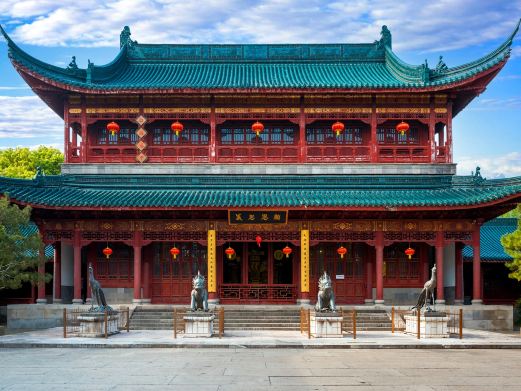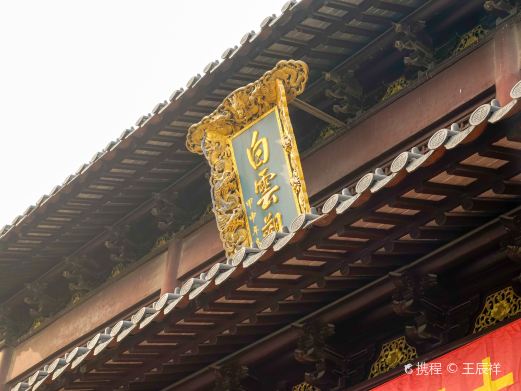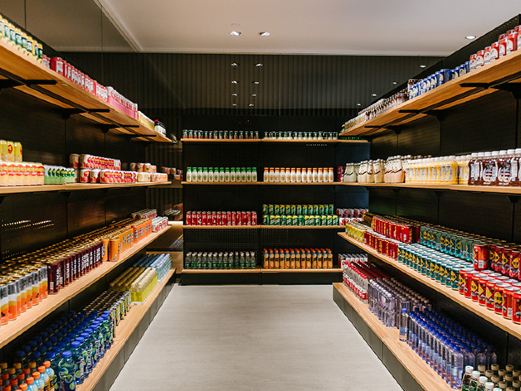Xinghua Zen Temple is located at the eastern foot of Yunlong Mountain in the southern scenic area of Xuzhou, Jiangsu Province. It is a Zen Buddhist temple. In 1390 during the Hongwu period of the Ming Dynasty, it was built based on the large stone Buddha. With a long history of incense offerings, it has become a major Buddhist forest in northern Jiangsu. The Amitabha large stone Buddha enshrined in Xinghua Zen Temple was initially carved during the Zhenping period (450 AD) of the Northern Wei Dynasty and has a history of more than 1,500 years.
The stone Buddha is carved according to the mountain rock. It is about eleven and a half meters high. At first, it was an open-air Buddha head. During the Kangxi period of the Qing Dynasty, the two arms and chest were continuously carved. The hall covering the large stone Buddha was built in the Ming Dynasty and was constructed along the mountain cliff. Under the eaves at the back wall of the hall, there are only three layers of bricks stacked, so it is called ‘a hall of three bricks covering a Buddha of three zhangs’, becoming a wonder in the Zen forest. There are still bell and drum towers, ancestral halls, a sutra depository building of Ming Dynasty architecture and an iron bell weighing about three tons in Xinghua Zen Temple. In June 1993, when the new Mahavira Hall was built, Buddhist cliff carvings from the Tang and Song dynasties buried deep underground were unearthed, with a total of seven groups and 195 statues. A protection room was built for tourists to view. Mr. Zhao Puchu, the president of the Buddhist Association of China, inscribed ‘Tang and Song cliff stone carvings and statues’ for it. In 1995, it was listed as a provincial-level cultural relic protection unit by the People’s Government of Jiangsu Province. On the top floor of the protection room for Tang and Song cliff stone carvings is the newly-built Mahavira Hall. The hall has upturned eaves and dougong, warped corners soaring into the sky, and is decorated with gold and colorful paintings, presenting a magnificent momentum. Inside the hall, the Buddhas of the three periods are enshrined. The Medicine Buddha is on the left, the Amitabha Buddha is on the right, and Sakyamuni Buddha is in the middle, solemn, compassionate and serene. Xinghua Zen Temple covers an area of about 7,000 square meters and a building area of 1,982 square meters. Since liberation, it has been repaired several times. It not only maintains the ancient appearance of Ming Dynasty architecture but also takes on a new look. Under the cover of pines and cypresses, with winding paths, corridors, bamboo groves and flowers and trees, it is elegant and quiet, especially like a fairyland. Monks live in harmony, taking precepts as their teacher. The morning bell and evening drum make the ancient temple shine. Now it is also the office address of the Xuzhou Buddhist Association. Opening hours: Open all year round from 08:00 to 16:30.Xinghua Zen Temple
Xinghua Zen Temple is located at the eastern foot of Yunlong Mountain in the southern scenic area of[...]









